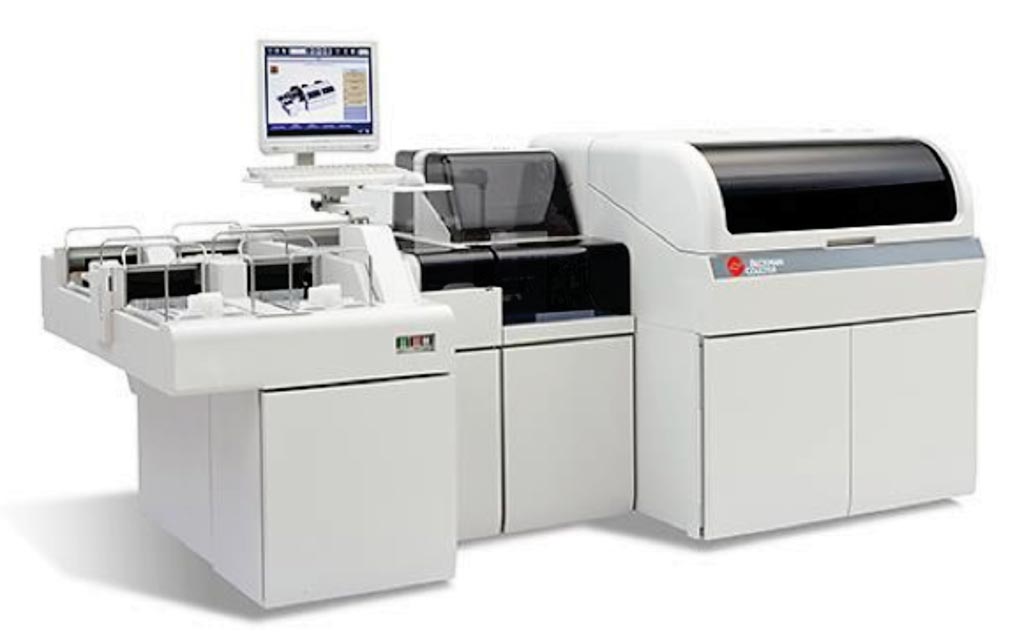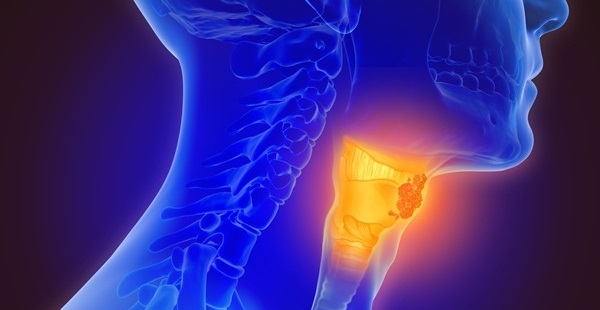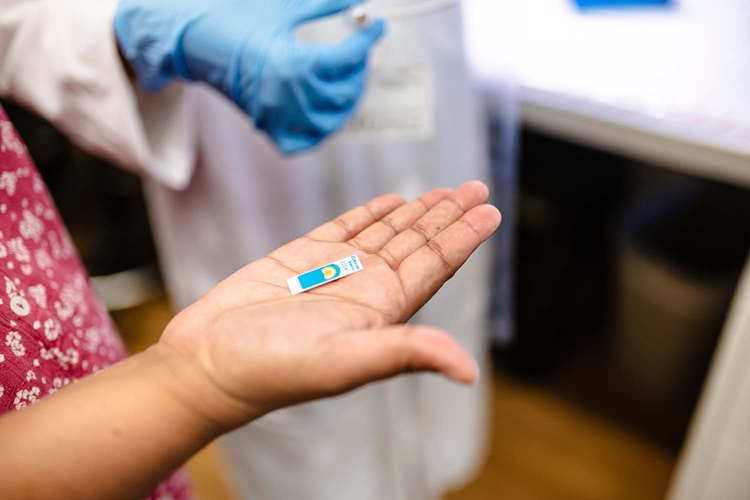Fructosamine Reference Range Established for Brazil
|
By LabMedica International staff writers Posted on 14 Jan 2019 |

Image: The AU 5800 automatic analyzer (Photo courtesy of Beckman Coulter).
Traditional markers used in diabetes diagnosis and monitoring include fasting plasma glucose (FPG), two-hour plasma glucose (2-hPG) measured during the oral glucose tolerance test (OGTT), and glycated hemoglobin (HbA1c) levels.
The fructosamine test is used in the monitoring of diabetes mellitus, particularly in cases with restrictions on the use of glycated hemoglobin, mainly in the setting of altered red blood cell lifespan and interference by hemoglobin variants. It could also provide additional information on shorter-term glycemic control.
Scientists at the Federal University of Minas Gerais, (Belo Horizonte, Brazil) collected blood samples from 2,288, that were part of a comprehensive study and available for fructosamine testing. The team excluded from the study individuals with a previous history of diabetes (n = 161), with FPG ≥ 5.6 mmol/L (100 mg/dL) and/or 2-hPG ≥ 7.8 mmol/L (140 mg/dL) and/or HbA1c ≥ 38.8 mmol/mol, (5.7%). They also excluded individuals with microalbuminuria ≥ 20 μg/min and creatinine> 114.9 µmol/L (1.3 mg/dL).
Samples were collected after a 12-h fasting period. The OGTT was conducted in all participants included in the present study. Samples were stored at −80 °C. Serum fructosamine levels were determined by the colorimetric nitroblue tetrazolium method in an AU 5800 automatic analyzer. The scientists proposed that the reference interval should be 186 to 248 μmol/L for women and 196 to 269 μmol/L for men. Fructosamine levels were higher in men than in women and in the non-white population and had a negative correlation with the body mass index.
The authors concluded that their study represents the first effort to establish a reference range for fructosamine levels in the Brazilian population. The report, which used the ELSA-Brazil baseline as a source of data, might contribute to future work on the diagnosis and monitoring of diabetes mellitus (DM), especially in situations when HbA1c and OGTT cannot be used. The study was published in the January 2019 issue of the journal Practical Laboratory Medicine.
Related Links:
Federal University of Minas Gerais
The fructosamine test is used in the monitoring of diabetes mellitus, particularly in cases with restrictions on the use of glycated hemoglobin, mainly in the setting of altered red blood cell lifespan and interference by hemoglobin variants. It could also provide additional information on shorter-term glycemic control.
Scientists at the Federal University of Minas Gerais, (Belo Horizonte, Brazil) collected blood samples from 2,288, that were part of a comprehensive study and available for fructosamine testing. The team excluded from the study individuals with a previous history of diabetes (n = 161), with FPG ≥ 5.6 mmol/L (100 mg/dL) and/or 2-hPG ≥ 7.8 mmol/L (140 mg/dL) and/or HbA1c ≥ 38.8 mmol/mol, (5.7%). They also excluded individuals with microalbuminuria ≥ 20 μg/min and creatinine> 114.9 µmol/L (1.3 mg/dL).
Samples were collected after a 12-h fasting period. The OGTT was conducted in all participants included in the present study. Samples were stored at −80 °C. Serum fructosamine levels were determined by the colorimetric nitroblue tetrazolium method in an AU 5800 automatic analyzer. The scientists proposed that the reference interval should be 186 to 248 μmol/L for women and 196 to 269 μmol/L for men. Fructosamine levels were higher in men than in women and in the non-white population and had a negative correlation with the body mass index.
The authors concluded that their study represents the first effort to establish a reference range for fructosamine levels in the Brazilian population. The report, which used the ELSA-Brazil baseline as a source of data, might contribute to future work on the diagnosis and monitoring of diabetes mellitus (DM), especially in situations when HbA1c and OGTT cannot be used. The study was published in the January 2019 issue of the journal Practical Laboratory Medicine.
Related Links:
Federal University of Minas Gerais
Latest Clinical Chem. News
- POC Breath Diagnostic System to Detect Pneumonia-Causing Pathogens
- Online Tool Detects Drug Exposure Directly from Patient Samples
- Chemical Imaging Probe Could Track and Treat Prostate Cancer
- Mismatch Between Two Common Kidney Function Tests Indicates Serious Health Problems
- VOCs Show Promise for Early Multi-Cancer Detection
- Portable Raman Spectroscopy Offers Cost-Effective Kidney Disease Diagnosis at POC
- Gold Nanoparticles to Improve Accuracy of Ovarian Cancer Diagnosis
- Simultaneous Cell Isolation Technology Improves Cancer Diagnostic Accuracy
- Simple Non-Invasive Hair-Based Test Could Speed ALS Diagnosis
- Paper Strip Saliva Test Detects Elevated Uric Acid Levels Without Blood Draws
- Prostate Cancer Markers Based on Chemical Make-Up of Calcifications to Speed Up Detection
- Breath Test Could Help Detect Blood Cancers
- ML-Powered Gas Sensors to Detect Pathogens and AMR at POC
- Saliva-Based Cancer Detection Technology Eliminates Need for Complex Sample Preparation
- Skin Swabs Could Detect Parkinson’s Years Before Symptoms Appear
- New Clinical Chemistry Analyzer Designed to Meet Growing Demands of Modern Labs

Channels
Molecular Diagnostics
view channel
STI Molecular Test Delivers Rapid POC Results for Treatment Guidance
An affordable, rapid molecular diagnostic for sexually transmitted infections (STIs) has the potential to be globally relevant, particularly in resource-limited settings where rapid, point-of-care results... Read more
Blood Biomarker Improves Early Brain Injury Prognosis After Cardiac Arrest
After a cardiac arrest, many patients remain unconscious for days, leaving doctors and families facing uncertainty about whether meaningful recovery is possible. Current tools to assess brain damage, including... Read more
Biomarkers Could Identify Patients at High Risk of Severe AKI After Major Surgery
Acute kidney injury is one of the most common and dangerous complications after major surgery, particularly among patients in intensive care. Even mild impairment of kidney function can lead to long-term... Read more
CLIA Test Identifies Head and Neck Cancer Recurrence from Post-Surgical Lymphatic Fluid
While the lymphatic system’s critical role in metastasis has long been recognized, routine access to patient lymph has been elusive. Now, a non-invasive process can access lymph through the collection... Read moreHematology
view channel
MRD Tests Could Predict Survival in Leukemia Patients
Acute myeloid leukemia is an aggressive blood cancer that disrupts normal blood cell production and often relapses even after intensive treatment. Clinicians currently lack early, reliable markers to predict... Read more
Platelet Activity Blood Test in Middle Age Could Identify Early Alzheimer’s Risk
Early detection of Alzheimer’s disease remains one of the biggest unmet needs in neurology, particularly because the biological changes underlying the disorder begin decades before memory symptoms appear.... Read more
Microvesicles Measurement Could Detect Vascular Injury in Sickle Cell Disease Patients
Assessing disease severity in sickle cell disease (SCD) remains challenging, especially when trying to predict hemolysis, vascular injury, and risk of complications such as vaso-occlusive crises.... Read more
ADLM’s New Coagulation Testing Guidance to Improve Care for Patients on Blood Thinners
Direct oral anticoagulants (DOACs) are one of the most common types of blood thinners. Patients take them to prevent a host of complications that could arise from blood clotting, including stroke, deep... Read moreImmunology
view channel
Blood Test Could Identify Colon Cancer Patients to Benefit from NSAIDs
Colon cancer remains a major cause of cancer-related illness, with many patients facing relapse even after surgery and chemotherapy. Up to 40% of people with stage III disease experience recurrence, highlighting... Read moreBlood Test Could Detect Adverse Immunotherapy Effects
Immune checkpoint inhibitors have transformed cancer treatment, but they can also trigger serious immune-related adverse events that damage healthy organs and may become life-threatening if not detected early.... Read moreMicrobiology
view channel
Breakthroughs in Microbial Analysis to Enhance Disease Prediction
Microorganisms shape human health, ecosystems, and the planet’s climate, yet identifying them and understanding how they are related remains a major scientific challenge. Even with modern DNA sequencing,... Read more
Blood-Based Diagnostic Method Could Identify Pediatric LRTIs
Lower-respiratory tract infections (LRTIs) are a leading cause of illness and death worldwide, and pneumonia is the leading infectious cause of death in children under five, claiming the lives of over... Read morePathology
view channel
Rapid Low-Cost Tests Can Prevent Child Deaths from Contaminated Medicinal Syrups
Medicinal syrups contaminated with toxic chemicals have caused the deaths of hundreds of children worldwide, exposing a critical gap in how these products are tested before reaching patients.... Read more
Tumor Signals in Saliva and Blood Enable Non-Invasive Monitoring of Head and Neck Cancer
Head and neck cancers are among the most aggressive malignancies worldwide, with nearly 900,000 new cases diagnosed each year. Monitoring these cancers for recurrence or relapse typically relies on tissue... Read more
Common Health Issues Can Influence New Blood Tests for Alzheimer’s Disease
Blood-based tests for Alzheimer’s disease are transforming diagnosis by offering a simpler alternative to spinal taps and brain imaging. However, many people evaluated at memory clinics also live with... Read more
Blood Test Formula Identifies Chronic Liver Disease Patients with Higher Cancer Risk
Chronic liver disease affects millions worldwide and can progress silently to hepatocellular carcinoma (HCC), one of the deadliest cancers globally. While surveillance guidelines exist for patients with... Read moreTechnology
view channel
Machine Learning Models Diagnose ALS Earlier Through Blood Biomarkers
Amyotrophic lateral sclerosis (ALS) is a rapidly progressive neurodegenerative disease that is notoriously difficult to diagnose in its early stages. Early symptoms often overlap with other neurological... Read more
Artificial Intelligence Model Could Accelerate Rare Disease Diagnosis
Identifying which genetic variants actually cause disease remains one of the biggest challenges in genomic medicine. Each person carries tens of thousands of DNA changes, yet only a few meaningfully alter... Read moreIndustry
view channel
BD and Penn Institute Collaborate to Advance Immunotherapy through Flow Cytometry
BD (Becton, Dickinson and Company, Franklin Lakes, NJ, USA) has entered into a strategic collaboration with the Institute for Immunology and Immune Health (I3H, Philadelphia, PA, USA) at the University... Read more


















